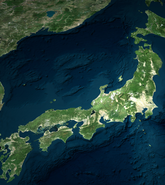NEWARK, Calif. - October 31, 2018 RMS, the leading global risk modeling and analytics firm, announces the release of its US Inland Flood High Definition (HD) model. Flood is the most frequent and widespread peril in the U.S. and has historically been difficult to model and insure due to its relative complexity and the lack of quality data available. RMS has leveraged extensive expertise in flood modeling to bring to market an innovative solution that solves for these existing market challenges. The new RMS US Inland Flood HD Model accounts for all types of inland floods, including those induced by both tropical cyclone and non-tropical cyclone rainfall, and is coupled with the RMS North Atlantic Storm Surge Model to provide a comprehensive view of inland flood risk alongside hurricane-driven coastal flood and wind risk.
Recent events such as Hurricane Harvey and Hurricane Florence have driven increased awareness around the potential flood risk across the US along with the large gaps that currently exist in coverage. There is immense opportunity for the insurance industry to grow the US Flood market, but this requires leveraging the right tools to understand and accurately assess this risk.
Vice President, Dr. Pete Dailey, commented: “The market demand for flood insurance is growing, but to date the industry has lacked a tool to enable a rigorous and comprehensive treatment of all sources of flood risk. We are excited that our investment of over 60 man-years of development effort have culminated in a tool that meets this broad market requirement.” RMS HD Inland Flood Model also takes the challenge of data availability head on, with first-of-its-kind capabilities to account for key drivers of flood risk, including employing intelligent modeling techniques to account for key structural attributes such as first floor height and basement characteristics. The model also includes the first market-wide solution to account for the presence of all defenses that help mitigate flood risk, even in the absence of this information being available in public datasets.RMS Vice President, Arno Hilberts, stated: “This model is based on state-of-the-art hydrodynamical modeling, and is the first of its kind to be explicitly calibrated to a both depth and flow observations, and validated using flood zone and flood depth information from FEMA, as well as detailed claims data. This makes is unique, and enables our clients to use the model all the way from portfolio-management to the point of underwriting.”
The new HD model considers all these key drivers and mitigators of flood and leverages robust vulnerability relationships to precisely translate flood hazard to physical damage and financial costs for a full range of residential, commercial and industrial structures.
The new HD Financial model facilitates understanding of cross-peril correlation with the ability to appropriately capture seasonality impacts, and accurately and flexibly model time-dependent reinsurance policy terms. Such innovations facilitate risk differentiation and competitive underwriting and pricing to quickly optimize risk selection, while managing and ultimately growing a profitable portfolio.
Expectations are that the flood market will continue to present opportunity to (re)insurers equipped with the most versatile modeling solutions. RMS Chief Risk Modeling Officer, Dr. Mohsen Rahnama commented: “With the NFIP’s recent removal of the non-compete clause for Write-Your-Own carriers, and it’s pending reauthorization in November, we are hopeful that private participation in the flood insurance market will only increase. As the market evolves, those writing flood insurance will rely on a model that allows them to accurately capture the full range of potential losses from inland and coastal flooding.”
What is new in Version 18?
- Terrorism: Updated scenario model including updates to targets database for US, UK and Belgium; updates to hazard footprints and changes to the default time of day, to react to changes in peak times across different occupations.
- Australia Cyclone: Model update includes the most recent market and meteorological data and lessons learned from recent events, such as Cyclone Yasi in 2011, Cyclone Marcia in 2015 and Cyclone Debbie in 2017. The update also accounts for the rise in properties at risk, with the number of dwellings within 200km of the coast increasing by 15% between 2006 and 2016.
- Australia Earthquake: Model update reflecting the latest scientific view of seismic hazard by incorporating data from the 2018 national seismic hazard map from Geoscience Australia. Updated event rates and ground motion models, combined with insight from local experts, provide the most up-to-date view of seismic risk in the country.
- Philippines Typhoon: The Philippines is one of the most disaster-prone countries in the world, with around 20 cyclones per year, and eight of these making landfall. New model capturing risk from wind and flooding, coastal storm surge and season precipitation-driven flooding. The model expands the RMS suite of climate modeling solutions to the Philippines.
- India Flood: New fully probabilistic Flood model. Flooding is the most significant natural hazard affecting India, comprising of about three-quarters of natural catastrophe losses. The new model combines the latest science with local engineering expertise, with an event set based on 125,000 events across 9,033 catchments throughout India; accounting for monsoon rainfall and expanding areas of impermeable ground in major cities such as Mumbai, Chennai and Delhi.
- India Earthquake: Update with high resolution geotechnical information for hazard amplification to differentiate risk. Over a thousand vulnerability functions are included with additional solutions for underwriting key exposures such as industrial facilities, buildings under construction, and marine cargo and specie risks. The financial model includes additional losses from landslide and liquefaction hazards.
- South Korea Earthquake: New model model covers ground shaking, liquefaction, and landslide risk, enabling users to comprehensively assess earthquake risk in South Korea. While events in this region are relatively rare, they have the potential to be damaging. In 2016 the Mw 5.4 Gyeongju Earthquake hit and in 2017 the Mw 5.4 Pohang Earthquake occurred close to the city of Pohang, damaging more than 23,000 buildings.
- Marine Cargo: Update allowing detailed insight into cargo fragility and exposure accumulation, enabling the identification of vulnerable concentrations of static cargo, the measurement of port accumulations, and the analysis of loss severity for key events.
- North America Hurricane: Storm surge update incorporating new methods and data made available since the last U.S. storm surge model update. This enhances risk differentiation between defended and undefended areas prone to storm-surge. Also included are defense assumptions and wave treatment within the storm surge hazard module, as well as basement functionality and first floor height assumptions within the vulnerability module.






